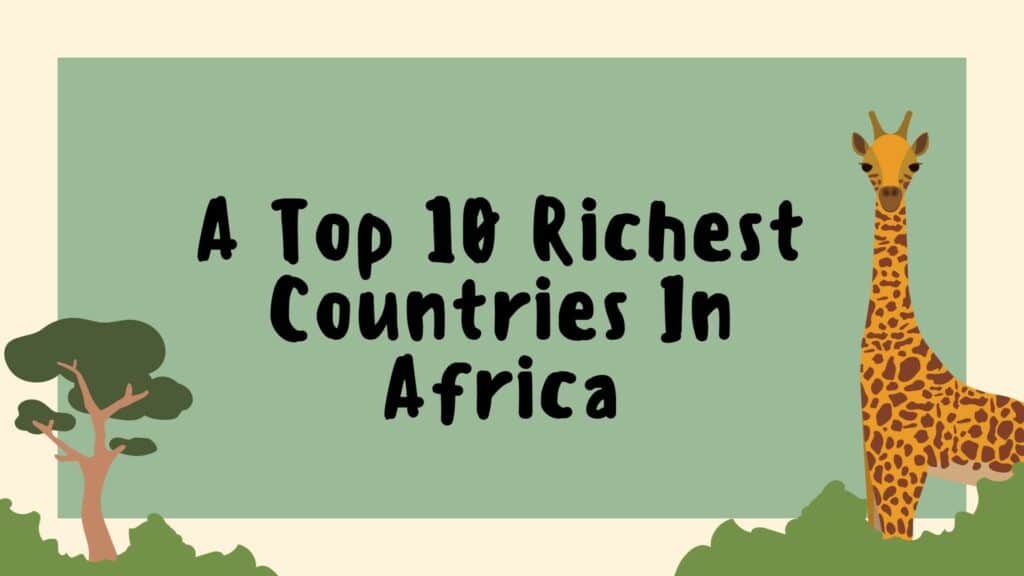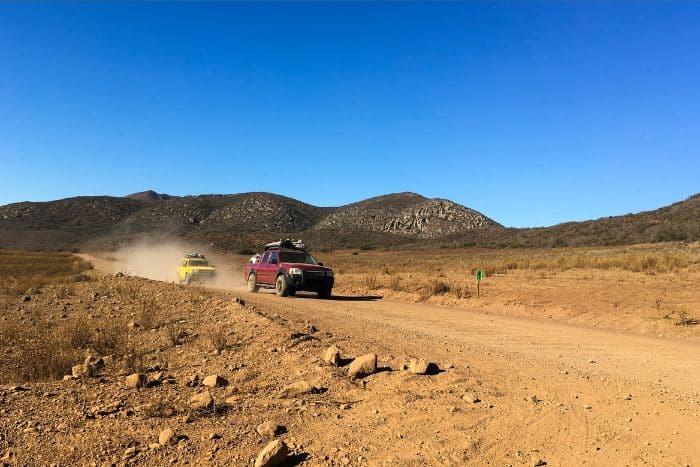I’ve photographed a lot of antelopes over the years, mostly because they’re always the animals that politely show up first on safari. And somewhere between the impala that photobombed my sunset shot and the kudu that gave me side-eye, I started noticing something interesting.
Not all antelopes are built for speed.
Some are literal rockets.
Others are more… let’s say… “philosophical” about movement.
So let’s talk about the antelope that is often called the fastest in Africa: the tsessebe.
And then let’s meet one of its slowest, chunkiest cousins: the common eland.
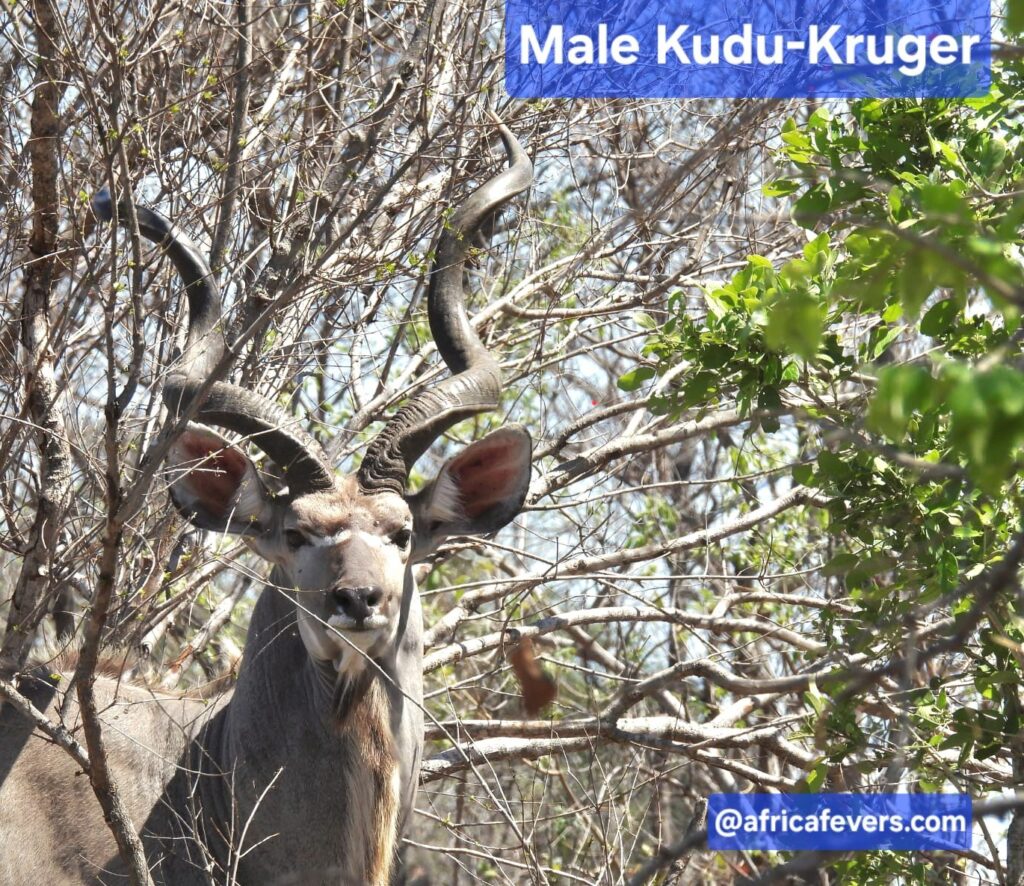
Why the Tsessebe Is (Probably) Africa’s Fastest Antelope
If you’ve never seen a tsessebe before, picture an antelope that looks slightly crooked when it stands, permanently leaning forward as if someone told it “go!” and it’s still deciding whether to sprint.
When tsessebes run, they don’t just move, they’re Speedy Gonzales.

They’re often credited with reaching 90–100 km/h, and while exact scientific measurements are scarce (nobody is running after them with a radar gun), field guides, rangers, and conservation organisations regularly rank them as one of Africa’s fastest land mammals.
What we do know for sure:
- Many reliable wildlife sources list tsessebes among the top sprinters in Africa.
- Rangers in Kruger National Park report they can “outrun almost any predator,” even at long distances.
- Some reports say they can keep a speed of 60 km/h for kilometres, which is outrageous stamina for an antelope.
So while the exact number may be debated — 80 km/h, 90 km/h, 100 km/h — the conclusion remains the same.
Tsessebes are absurdly fast.
If you blink on safari, you’ll miss them.
If you try to photograph them running, you’ll get a picture of grass. Some camera’s though, have a ‘sport setting’, where it takes hundreds of pictures in a few seconds. You could try that, and I wish you good luck!
🎥 Watch this Short on YouTube
The Eland: Africa’s Slow-Motion Tank
Now let’s switch to the opposite end of the speed spectrum. Enter the common eland, the largest antelope in the world.
Where the tsessebe is slim and aerodynamic, the eland looks like it was designed by someone who ran out of antelope ideas and just said:
“Let’s make this one… BIG.”
A fully grown bull can weigh up to 900 kg, which is more than your car probably should. Their necks look like they do deadlifts for fun. And they move with the calm confidence of an animal that knows lions won’t always risk the calories.
Some sources label them the slowest antelope in Africa, with top speeds around 32 km/h. Technically fast for humans, but among antelopes, it’s basically the equivalent of walking with enthusiasm.
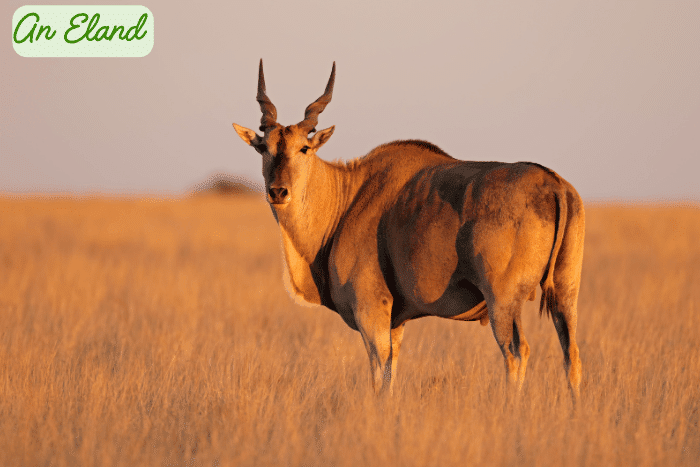
But they don’t need speed.
- They’re enormous
- They’re powerful
- And they can casually hop over a 2-meter fence
Imagine being that heavy and still able to jump like you’re late for an Olympic medal. That’s the eland for you.
Speed vs. Strength: Two Very Different Survival Styles
Watching these two species on safari always makes me laugh a little — not because they’re funny-looking (okay, the eland is a bit funny-looking), but because they represent two totally different strategies for staying alive.
The Tsessebe’s strategy
- Live in open grasslands
- See everything
- Outrun everything
- Repeat daily
This is the sprinter lifestyle: speed, adrenaline, and constantly being dramatic.
Versus
The Eland’s strategy
- Be enormous
- Be calm
- Be unbothered
- Walk away from your problems slowly
This is the “gentle giant” lifestyle, and honestly… I admire it.
What to Look For on Safari (If You Want to Impress Your Guide)
If you’re on safari in South Africa, Botswana, or Namibia:
Spotting a Tsessebe (Damaliscus lunatus)
The tsessebe is part of the “topi” group of antelopes and has a very distinctive look. It’s not the classic Bambi-style antelope. Instead:
- Colour: A shiny reddish-brown coat with darker patches on the shoulders and thighs
- Face: Long, narrow, and slightly comical — as if permanently in deep thought
- Build: Lean, muscular, with long legs made for speed
- Horns: Both males and females have lyre-shaped horns that curve gently backward
- Neck: Slender but strong, giving it that slightly hunched, forward-tilting posture
- Shoulders: Higher than the hips, which adds to the “ready to sprint” stance
- Size: About 1.1–1.4 m tall at the shoulder; 120–140 kg
- Movement: When running, they have a high, bounding gait and can reach incredible speeds
- Behavior: They often stand on termite mounds to scout for danger, and males defend territories fiercely

They have this quirky habit of “pronking” or high-stepping when excited, which looks impressive and slightly ridiculous at the same time.
Spotting an Eland (Taurotragus oryx) — Africa’s Giant, Gentle Powerhouse
The common eland is the absolute opposite — a heavyweight antelope that looks like it wandered out of a mythology book.
- Temperament: Calm, shy, peaceful
- Size: The largest antelope species; bulls can weigh 500–900 kg
- Height: 1.5–1.8 m at the shoulder (that’s taller than most people!)
- Colour: Tan or greyish-brown, with faint vertical white stripes along the body
- Hump: A prominent dewlap (loose flap of skin) hanging under the throat
- Neck & Shoulders: Thick, muscular, and very powerful
- Horns: Both males and females have corkscrew-shaped horns, straight and thick
- Body shape: Deep-chested with long, strong legs
- Movement: Surprisingly graceful despite the size, but slow compared to other antelopes
- Quirk: Elands produce a clicking sound when walking, caused by tendons in their knees; you often hear them before you see them
- Jumping ability: Despite their huge size, they can leap over 2-meter fences

If you can identify either species correctly, your safari guide will probably upgrade your wildlife-spotting reputation by at least one star.
My Final Conclusion.
I love how two animals living on the same continent can survive with completely opposite strategies: one outruns everything, the other just out-sizes everyone.
If you’ve ever spotted a tsessebe or an eland on safari (or if you just have a favourite African antelope), I’d love to hear about it.
Which one fascinates you the most — the speedster or the gentle giant?
Drop your answer in the comments!
Happy safari!
Kind regards,
Lizzy
Related article: Which African antelopes are masters in camouflage?
I now have a YouTube channel as well!
YouTube——————————————————————————————————————————————-
References & Sources
Tsessebe speed & behaviour
Kruger National Park:
https://www.krugerpark.co.za/Kruger_National_Park_Wildlife-travel/explore-kruger-park-buck-and-antelope.html
General tsessebe speed (~90 km/h)
Wikipedia (Common Tsessebe):
https://en.wikipedia.org/wiki/Common_tsessebe
Eland as one of the slowest antelopes (~32 km/h)
BirdWatchingHQ (Antelopes of Africa):
https://birdwatchinghq.com/antelopes-of-africa/
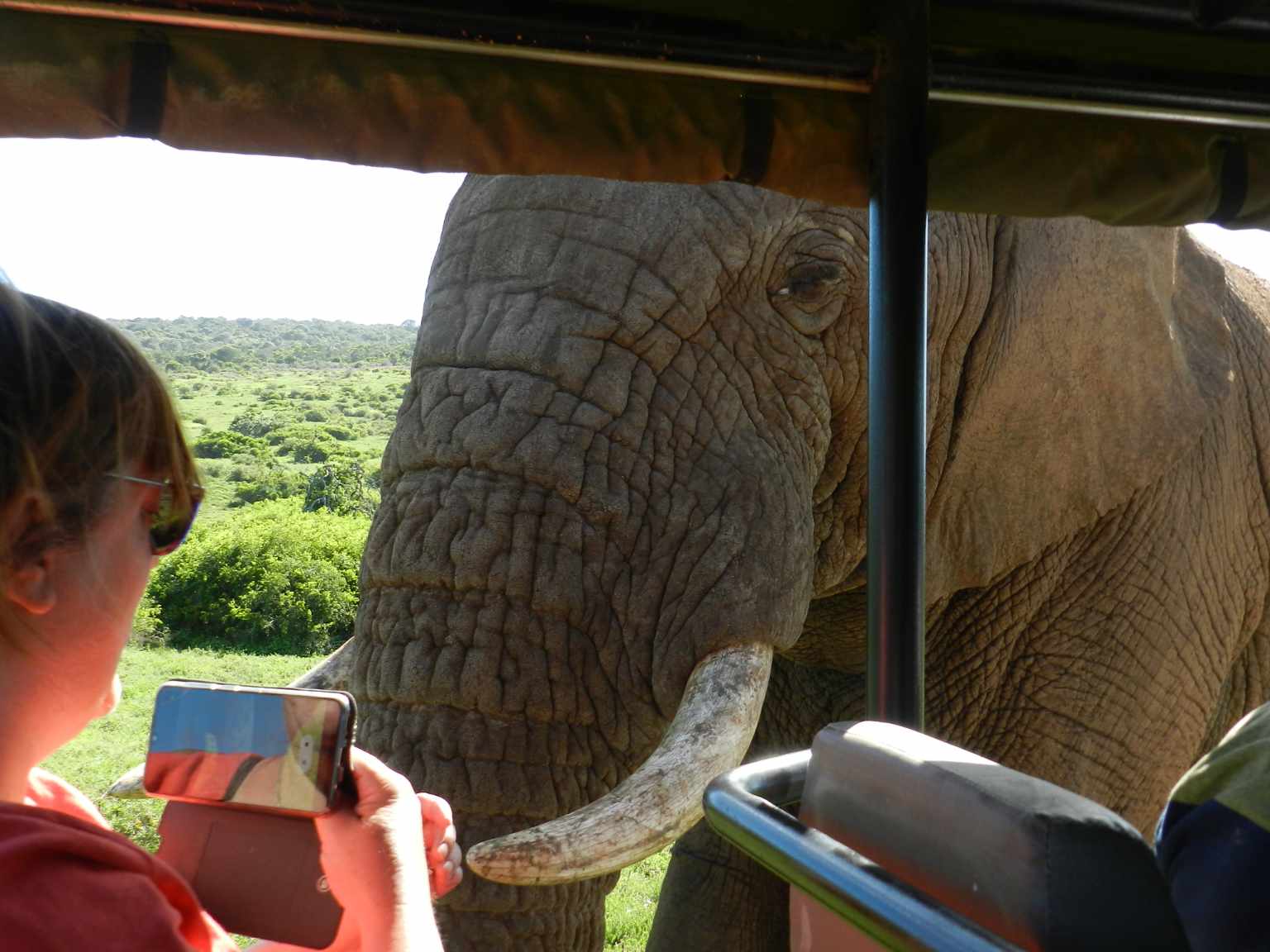
Hello Africa travellers!
Who am I? Well, the least you can say is that I am quite crazy about Africa, its nature, its climate, its culture, and more.
As a young woman in my twenties, I had already traveled to several African countries by traveling along in an overlander on my own and mostly camping ( or glamping ) and just fell in love with the diversity of it all.
So much, so that at the age of 26, I went back to university to study biology, which, unfortunately, I couldn’t finish because of health reasons (yes, I got sick from a tropical disease, oh cynicism). But this did not stop my dream of traveling back to Africa several times, and I still do.
My dream was back then to leave Europe and go study animal behavior, especially the elephants (sure, that’s every girl’s dream haha), but I am also very much intrigued by hyenas and other “ugly African animals“.
So, I “kind of” have a little bit of a scientific approach to my articles, when I write about African birds, for example. And most of all: the passion.
But life goes on, you move from one side of the country to the other, you get sick again and top it off with lower back problems, and before you know it, you are over 50 hahaha!
Now, I still travel to Africa, but take it a bit “easier” than the good old camping days, and stay in comfortable, yet affordable accommodations, together with my husband Wouter.
These are some of the countries I have traveled to: Kenya, Tanzania, Zanzibar, Malawi, Zambia, Zimbabwe, South Africa, Namibia, Botswana, Tunisia, and a little bit of Lesotho LOL .
While clearly not being African territory, but Spanish, I also visited Gran Canaria and Tenerife, and location-wise, I consider them “African”, because of their climate and nature, sue me :-p
The last trip I took was to South Africa in the year 2023, and it sure got the fevers for Africa back! From the Barberton mountains to the Drakensberg and the Southcoast, one month wasn’t enough at all to see the whole country, so we’ll be back! At ease and with a little bit more luxury than in my younger days haha!
I wish you happy travels!
Kind regards
Lizzy


